A LAMP TO ILLUMINATE THE FIVE STAGES
The Library of Tibetan Classics is a special series being developed by the Institute of Tibetan Classics aimed at making key classical Tibetan texts part of the global literary and intellectual heritage. Eventually comprising thirty-two large volumes, the collection will contain over two hundred distinct texts by more than a hundred of the best-known authors. These texts have been selected in consultation with the preeminent lineage holders of all the schools and other senior Tibetan scholars to represent the Tibetan literary tradition as a whole. The works included in the series span more than a millennium and cover the vast expanse of classical Tibetan knowledgefrom the core teachings of the specific schools to such diverse fields as ethics, philosophy, linguistics, medicine, astronomy and astrology, folklore, and historiography.
A Lamp to Illuminate the Five Stages
Tsongkhapa Losang Drakpa (13571419)
Tsongkhapas Lamp presents one of the most comprehensive and detailed presentations of the highest yoga class of Vajrayana Buddhism, especially the key practicesthe so-called five stages (pacakrama)of the advanced phase of Guyhasamja tantra. Beginning with a thorough examination of all the relevant Indic literature, Tsongkhapa draws particularly from the writings of Ngrjuna, ryadeva, Candrakrti, and Nropa to develop a definitive understanding of the Vajrayana completion stage. Traditionally the work belongs to a class of hidden texts that are to be read only by those who have received initiations.
The teachings and practices in this volume follow on from those contained in the sdhana volume (volume 13). Whereas in the generation stage, meditators visualize the Buddha in the form of the Guhyasamja deity residing in a mandala palace, in the completion stage discussed in the present volume, meditators transcend ordinary consciousness and actualize the state of a buddha themselves. In the course of presenting these practices, Tsongkhapas work outlines the subtle human physiology manipulated by the tantric adept, especially the network of channels and cakras, as well as the wind energies and vital drops that flow through them. Other topics, such as the Tibetan Buddhist understanding of the process of death and dying, the intermediate state of existence, and rebirthcentral concepts of which find their origin in the Guhyasamja Tantraas well as theories of human psychology, such as the scope and dynamic of the emotions, dream states, and near-death experiences, are also addressed in detail.
This text was Tsongkhapas last major work, which he completed in 1419, the year of his death. Its impact on the course of tantric practice in Tibet has been definitive for the Geluk school and profound for Tibetan Buddhism as a whole.

Wisdom Publications
199 Elm Street
Somerville, MA 02144 USA
www.wisdompubs.org
2013 Institute of Tibetan Classics
All rights reserved.
No part of this book may be reproduced in any form or by any means, electronic or mechanical, including photography, recording, or by any information storage or retrieval system or technologies now known or later developed, without permission in writing from the publisher.
Library of Congress Cataloging-in-Publication Data
Tso-kha-pa Blo-bza-grags-pa, 13571419, author.
[Rim la rab tu gsal bai sgron me. English]
A lamp to illuminate the five stages : teachings on Guhyasamja tantra / Tsongkhapa ; translated by Gavin Kilty.
pages cm (The library of Tibetan classics)
Includes bibliographical references and index.
ISBN 0-86171-454-7 (trade cloth : alk. paper)
1. Tripiaka. Strapiaka. Tantra. GuhyasamjatantraCommentariesEarly works to 1800. I. Kilty, Gavin, translator. II. Title.
BQ2155.T7613 2012
294.3823dc23
2012028292
ISBN 9780861714544
eBook ISBN 9781614290353
17 16 15 14 13
5 4 3 2 1
Cover and interior design by Gopa&Ted2, Inc.
Set in Adobe Garamond Premier Pro 10.5/13.5.
Wisdom Publications books are printed on acid-free paper and meet the guidelines for permanence and durability of the Production Guidelines for Book Longevity of the Council on Library Resources.
Printed in the United States of America.
 This book was produced with environmental mindfulness. We have elected to print this title on 30% PCW recycled paper. As a result, we have saved the following resources: 27 trees, 12 million BTUs of energy, 2327 lbs. of greenhouse gases, 12,620 gallons of water, and 845 lbs. of solid waste. For more information, please visit our website, www.wisdompubs.org. This paper is also FSC certified. For more information, please visit www.fscus.org.
This book was produced with environmental mindfulness. We have elected to print this title on 30% PCW recycled paper. As a result, we have saved the following resources: 27 trees, 12 million BTUs of energy, 2327 lbs. of greenhouse gases, 12,620 gallons of water, and 845 lbs. of solid waste. For more information, please visit our website, www.wisdompubs.org. This paper is also FSC certified. For more information, please visit www.fscus.org.
Message from the Dalai Lama
THE LAST TWO MILLENNIA witnessed a tremendous proliferation of cultural and literary development in Tibet, the Land of Snows. Moreover, due to the inestimable contributions made by Tibets early spiritual kings, numerous Tibetan translators, and many great Indian paitas over a period of so many centuries, the teachings of the Buddha and the scholastic tradition of ancient Indias Nland monastic university became firmly rooted in Tibet. As evidenced from the historical writings, this flowering of Buddhist tradition in the country brought about the fulfillment of the deep spiritual aspirations of countless sentient beings. In particular, it contributed to the inner peace and tranquility of the peoples of Tibet, Outer Mongoliaa country historically suffused with Tibetan Buddhism and its culturethe Tuva and Kalmuk regions in present-day Russia, the outer regions of mainland China, and the entire trans-Himalayan areas on the southern side, including Bhutan, Sikkim, Ladakh, Kinnaur, and Spiti. Today this tradition of Buddhism has the potential to make significant contributions to the welfare of the entire human family. I have no doubt that, when combined with the methods and insights of modern science, the Tibetan Buddhist cultural heritage and knowledge will help foster a more enlightened and compassionate human society, a humanity that is at peace with itself, with fellow sentient beings, and with the natural world at large.
It is for this reason I am delighted that the Institute of Tibetan Classics in Montreal, Canada, is compiling a thirty-two-volume series containing the works of many great Tibetan teachers, philosophers, scholars, and practitioners representing all major Tibetan schools and traditions. These important writings will be critically edited and annotated and will then be published in modern book format in a reference collection called The Library of Tibetan Classics, with their translations into other major languages to follow later. While expressing my heartfelt commendation for this noble project, I pray and hope that The Library of Tibetan Classics will not only make these important Tibetan treatises accessible to scholars of Tibetan studies, but will create a new opportunity for younger Tibetans to study and take interest in their own rich and profound culture. Through translations into other languages, it is my sincere hope that millions of fellow citizens of the wider human family will also be able to share in the joy of engaging with Tibets classical literary heritage, textual riches that have been such a great source of joy and inspiration to me personally for so long.

The Dalai Lama
The Buddhist monk Tenzin Gyatso
Next page

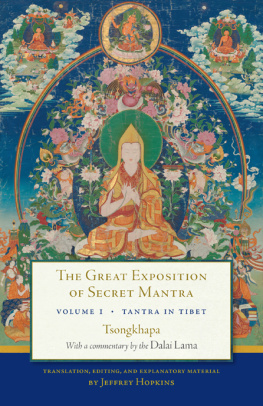
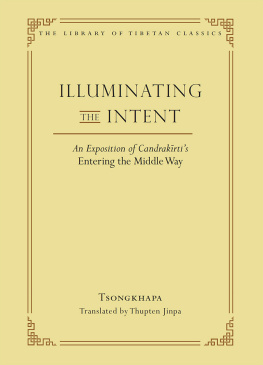
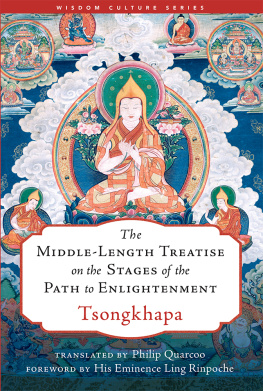
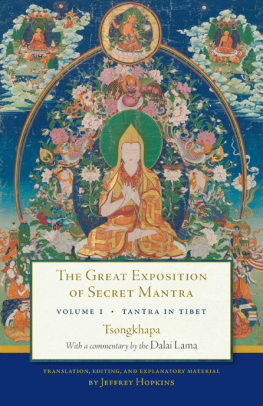

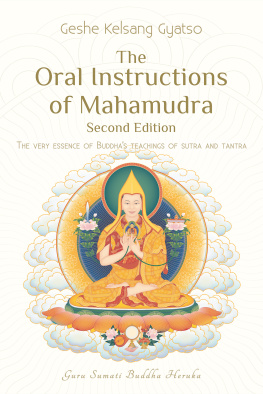

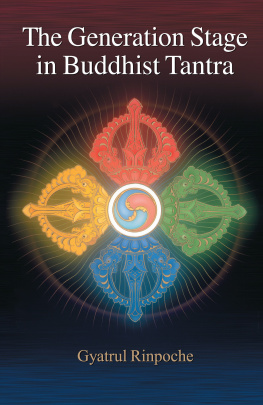

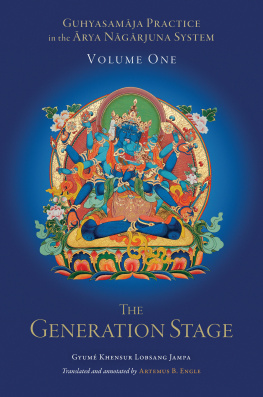
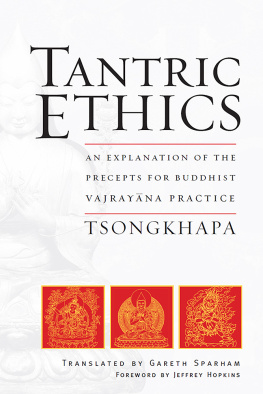


 This book was produced with environmental mindfulness. We have elected to print this title on 30% PCW recycled paper. As a result, we have saved the following resources: 27 trees, 12 million BTUs of energy, 2327 lbs. of greenhouse gases, 12,620 gallons of water, and 845 lbs. of solid waste. For more information, please visit our website, www.wisdompubs.org. This paper is also FSC certified. For more information, please visit www.fscus.org.
This book was produced with environmental mindfulness. We have elected to print this title on 30% PCW recycled paper. As a result, we have saved the following resources: 27 trees, 12 million BTUs of energy, 2327 lbs. of greenhouse gases, 12,620 gallons of water, and 845 lbs. of solid waste. For more information, please visit our website, www.wisdompubs.org. This paper is also FSC certified. For more information, please visit www.fscus.org.